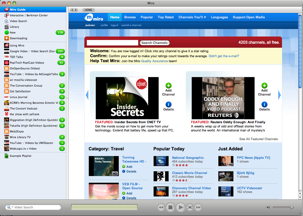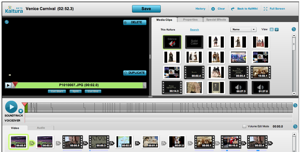Jonathan Zittrain’s The Future of the Internet (and How to Stop It) is quickly rising to the top of my summer reading list (about which more to come in a later blog post). The distinctions he draws (based on his recent talks, see video here, here, and here) between sterile and generative platforms, and the concerns he raises about contingently generative or tethered platforms, seem to me right on target, and consistent with the issues Tim O’Reilly has been raising (along with, of course, many others) about how to translate the freedom behind free software and the openness behind open source into a world in which services and data live in the cloud.
One major place where the conflict between fully generative and contingently generative comes into play is on online video. YouTube‘s terms of service should give any independent video maker pause – both in terms of the license rights they claim and in terms of the susceptibility to take down on the basis of broad criteria[1].
Three things make me hopeful, though, for the future of video on the open web: Memory Tree in Toronto, Miro and Kaltura.
In other words, YouTube may suspend your account at virtually any time and for virtually any reason. Remember, since you’re also not allowed (per the Terms of Use) to download videos from YouTube, if the copy stored at YouTube gets deleted in theory it vanishes entirely, making your web browser connected to YouTube one giant tethered appliance. (“You agree not to access . . . YouTube Content through any technology or means other than the video playback pages of the Website itself, the YouTube Embeddable Player, or other explicitly authorized means YouTube may designate”).
And don’t even get me started on DRM, which aims to replicate the experience of a tethered appliance with content on your own computer.
Last week Dean Jansen from the Participatory Culture Foundation came to visit the Berkman Thursday blog group to talk about Miro.
Miro, which I’ve blogged about many times in the past, is an open source, multi-platform, standards aware video player, as well as a collaboratively edited channel guide. If you spend any significant amount of time watching video on your computer, you should have it. (It’s especially great for longer-form video, high definition video, and disconnected mode – planes, trains, and automobiles).
(Yes, those are actually my subscriptions – click for full size image).
Two things I did not know about Miro that Dean showed us:
- You can add additional web sites as “Guides” inside the Miro player. If they aren’t formatted as guides they won’t quite work the same way, but this makes it possible to have multiple guides from different sources, ensuring distribution of control of the media.
- You can create an account on the Miro guide, which tracks your ratings of channels and then can suggest channels you might like, on the basis of those recommendations.
I’ve also been looking at (and talking to the team behind) Kaltura, which bills itself as:
The first open-source platform for video creation, management, interaction, and collaboration.
Kaltura not only enables you to embed video on your site (a la YouTube, Blip.TV, or several dozen others), but lets users collaboratively edit video, providing a complex and full featured editing environment all hosted in the user’s browser.
Kaltura has an interesting partnership with the Wikimedia foundation (see Yochai Benkler’s blog entry about it) and make a video extension for MediaWiki is available now from their downloads page; extensions for Drupal and WordPress are “coming soon.” These extensions let you integrate Kaltura’s SaaS offering inside your hosted application.
The “Community Edition Video Platform,” which will let people provide the full Kaltura functionality from behind a firewall or on their own server, is work in progress, but you can register on their site to be notified when it becomes available.
While it may sometimes seem that free software is not required for generative platforms – an argument Zittrain makes in his presentations above – free and open source solutions do help us to avoid the kind of contingent generativity Zittrain describes, since the worst case scenario is to take the software and run your own, or modify it in order to remove whatever restrictions (intentional or unintentional) the platform imposes. You just can’t do that with most hosted offerings.
[1] From the YouTube Terms of Use:
YouTube reserves the right to decide whether Content or a User Submission is appropriate and complies with these Terms of Service for violations other than copyright infringement, such as, but not limited to, pornography, obscene or defamatory material, or excessive length. YouTube may remove such User Submissions and/or terminate a User’s access for uploading such material in violation of these Terms of Service at any time, without prior notice and at its sole discretion.

